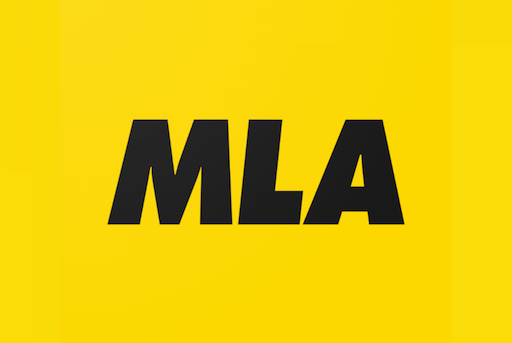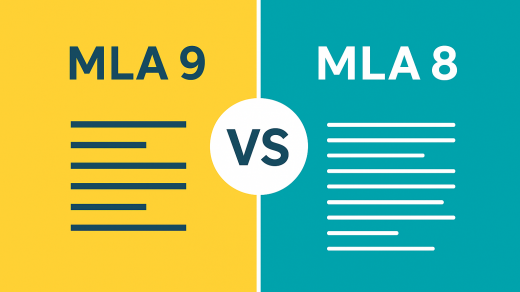Research projects in higher education are as much exercises in critical thinking as they are tests of time management. Among the many challenges students face, citation is one of the most labor-intensive and often underestimated components. Properly formatted citations in MLA style require attention to detail, accuracy, and consistency — skills that can consume hours if approached inefficiently. While some students may view citations as a mere formality, they are actually a crucial element in maintaining academic integrity, strengthening arguments, and situating work within the broader scholarly conversation.
Understanding the hidden labor behind MLA citations is essential. Beyond merely listing sources, students must track materials, evaluate reliability, format entries correctly, and integrate them seamlessly into the text. This essay examines time management strategies, practical organization techniques, and digital tools that can streamline the process. By mastering these methods, students can reduce stress, increase efficiency, and maintain high-quality work.
Understanding the Work Behind MLA Citations
The Modern Language Association (MLA) citation system is widely used in humanities disciplines, including literature, cultural studies, and the arts. While its guidelines are more flexible than some scientific styles, MLA still demands meticulous attention to detail. Every source — from books and journal articles to websites and social media posts — requires specific information in a structured format. Failure to comply can result in unintentional plagiarism, lower grades, or credibility loss.
The labor involved in MLA citations is multi-faceted:
-
Source identification: Before citing, students must locate relevant, credible sources. This involves reading abstracts, skimming articles, and evaluating authorship.
-
Information extraction: Each citation requires precise details: author names, titles, publication dates, page numbers, and URLs or DOIs for online sources.
-
Formatting: MLA style dictates rules for italics, quotation marks, capitalization, punctuation, and indentation. Minor mistakes, such as misplacing a comma or using incorrect capitalization, can render a citation incorrect.
-
In-text integration: Properly integrating citations into prose, using parenthetical references, signal phrases, and page numbers, adds an additional layer of complexity.
-
Bibliography construction: The Works Cited page must reflect all sources cited in the text, organized alphabetically and formatted consistently.
Each step consumes time, and when multiplied by the number of sources in a research project, the hidden labor can be substantial. A ten-page essay with fifteen to twenty sources may require several hours just to manage citations alone. Without effective strategies, students risk last-minute scrambling that compromises both quality and originality.
Time Management Techniques for MLA Projects
Efficient time management is essential for tackling the hidden labor of citations. Approaching a research project in a structured manner can transform what seems like a tedious obligation into an organized, manageable process. Several techniques have proven effective:
1. Early Planning and Source Mapping
Begin by outlining the project’s scope, defining research questions, and estimating the number of sources required. Creating a source map — a simple spreadsheet or document tracking authors, titles, dates, and access information — allows for rapid retrieval later. This prevents wasted time searching for missing details mid-writing.
2. Incremental Workflows
Rather than deferring all citation work to the final draft, students benefit from incremental citation management. Every time a source is consulted, immediately record its bibliographic details. This reduces cognitive load and prevents last-minute panic. Incremental workflows align with broader project management principles: divide large tasks into smaller, achievable steps.
3. Task Prioritization and Scheduling
Using principles like the Eisenhower Matrix or Pomodoro Technique, students can prioritize high-impact citation work and allocate focused periods for integration. For instance, one session may be dedicated to formatting in-text citations, while another focuses on refining the Works Cited page. Breaking tasks into scheduled blocks increases concentration and efficiency.
4. Reflection and Review
After drafting the essay, reviewing citations systematically ensures consistency. Students should cross-check in-text references with the Works Cited page, verify page numbers, and confirm source accessibility. Integrating this review into the overall schedule prevents last-minute errors and ensures a polished final submission.
Digital Tools for Streamlined Citation Management
Digital tools can dramatically reduce the hidden labor involved in MLA citations. These tools fall into several categories, each offering unique advantages and limitations:
| Tool Category | Examples | Purpose & Advantages | Potential Limitations |
|---|---|---|---|
| Citation Generators | EasyBib, CiteThisForMe, ZoteroBib | Automatically generate MLA-formatted entries; save time on formatting | Risk of inaccuracies; may require manual verification |
| Reference Managers | Zotero, Mendeley, EndNote | Organize large source collections; track notes; integrate with word processors | Initial setup is time-intensive; learning curve for software |
| Writing Assistants | Grammarly, Hemingway Editor | Check grammar, punctuation, and clarity in cited text | Limited MLA formatting support; cannot verify bibliographic accuracy |
| Research Databases | JSTOR, Project Muse, Google Scholar | Access scholarly sources quickly; export citation data | Access may be restricted by subscriptions; requires source evaluation |
The table highlights a critical principle: technology is an enabler, not a replacement for judgment. While citation generators can save significant time, students must verify the output against official MLA guidelines. Reference managers are invaluable for large projects but require upfront effort to learn and maintain. Understanding both the strengths and limitations of digital tools ensures they serve the writer effectively.
Integrating Citation Work into Overall Project Management
Citations should not be treated as an afterthought but as an integral part of the research workflow. By embedding citation management into project planning, students can maintain high-quality standards while minimizing stress.
1. Align Research and Citation Phases
Each research phase should coincide with citation recording. For example, when reading a journal article for evidence, immediately capture bibliographic details. This integration prevents redundancy and preserves the original context of each source.
2. Combine Note-Taking with Citation
Digital tools like Zotero or Notion allow students to attach notes directly to bibliographic entries. By linking observations, quotes, and page references to the citation, the time spent writing is reduced, and source attribution becomes seamless.
3. Establish Citation Checkpoints
Rather than waiting until the final draft, schedule regular citation reviews. Each checkpoint can include cross-checking in-text references with the bibliography, confirming URL accessibility, and verifying formatting rules. Incremental review ensures accuracy and prevents overwhelming last-minute corrections.
4. Optimize Collaboration and Peer Review
For group projects, shared citation libraries (e.g., cloud-based Zotero collections) allow team members to contribute sources collaboratively. This reduces duplication and ensures consistency. Peer review can also focus on both content and citation accuracy, creating a secondary safeguard.
5. Balance Creativity with Compliance
Effective time management should not compromise critical thinking or argument development. Treat citation as a supportive framework: it grounds the essay in credible research while freeing cognitive bandwidth for creativity, analysis, and synthesis.
Conclusion
The hidden labor of citation in MLA research projects is a significant, often underestimated component of academic writing. Properly managing sources, formatting references, and integrating citations requires careful attention, planning, and organization. Yet with effective time management strategies — including incremental workflows, scheduling, note integration, and digital tool use — this labor becomes manageable rather than overwhelming.
Digital tools, when applied strategically, can save hours of tedious work. Citation generators, reference managers, and research databases accelerate source collection and formatting while reducing errors. However, these tools are not substitutes for human judgment, critical thinking, or engagement with the research process. Understanding their strengths and limitations is essential to maintain academic integrity and originality.
Ultimately, successful MLA projects require a synthesis of organization, technology, and reflection. By treating citation as a deliberate, integrated component of research rather than a perfunctory task, students can reduce stress, improve efficiency, and enhance the overall quality of their work. The hidden labor of citation, far from being a barrier, becomes an opportunity to develop disciplined, structured, and reflective academic practices that will benefit students across disciplines and throughout their scholarly careers.




